 "Jake Stumph Racing" (jakestumphracing)
"Jake Stumph Racing" (jakestumphracing)
09/11/2015 at 10:05 • Filed to: jakestumphracing, BMW, 135i, coilover, suspension install, DIY
 4
4
 8
8
 "Jake Stumph Racing" (jakestumphracing)
"Jake Stumph Racing" (jakestumphracing)
09/11/2015 at 10:05 • Filed to: jakestumphracing, BMW, 135i, coilover, suspension install, DIY |  4 4
|  8 8 |
!!! UNKNOWN CONTENT TYPE !!!
My !!!error: Indecipherable SUB-paragraph formatting!!! , which consisted of Vorshlag camber plates adapted to the OEM front struts and springs, and OEM rear shocks and springs, had become more long in the tooth than my writing. The front shocks had been blown for 2 track days, 3 autocrosses and several thousand street miles, and I could ignore it no longer. Additionally, the OEM rear shocks are notorious for being extremely under-damped, and generally offering terrible ride quality, and poor contact with the pavement.
!!! UNKNOWN CONTENT TYPE !!!

Shock fluid had covered the entire wheelwell, and attracted a lot of grime.
!!! UNKNOWN CONTENT TYPE !!!
The deliberation on what suspension setup to replace the tired OEM suspension had begun months ago. High end race shocks were out of the budget, as much as AST, Motons or JRZ would be awesome, I simply could not swing it financially. Moving a notch down on the tier of the suspension hierarchy, I began researching KW, Ohlins and TC Kline.
Off the shelf KW’s have spring rates that highly differ from how the factory sets these cars up. KW has a relatively stiff front spring rate and a relatively soft rear spring rate. This seemed like a mistake to me, as the natural low ride height of these cars can induce a lot of bottoming out in the rear if the springs aren’t stiff enough and the dampers aren’t up to the task. Weight transfer is good if you’re drag racing, but in road racing, it makes the front end go light, which is no bueno. Additionally, my own inclinations were that this would exacerbate the low speed understeer issues dialed into the E82 chassis. This was confirmed when speaking with several people who owned or used the KW’s. The damper technology in the V2/V3/Clubsport is fantastic, but almost everyone who used them for competitive purposes had went with custom springs to tailor the spring rates, and in doing so, had the shocks revalved to match the change. The thought of having to dump additional money on top of the KW price tag just to get them where I wanted them was a no go. KW was out.
Ohlins are a relative new comer in the passenger car suspension game. Their shocks are renowned in the arena of competitive motorcycle racing, and if their press material is to be believed, that has carried over in their car shock tuning. The Ohlins Road and Track series of coil-overs are designed with Dual Flow Valve (DFV) technology which in theory offers shock performance equivalent to a remote reservoir style race shock, and be be perfectly at home on the bumpy canyon roads just as much as they can at the track. As enticing as the shock technology is, I did find two flaws for my particular application. First off, the out of the bo spring rates were not what I was looking for. The 135i is a pretty heavy car, and soft springs, although nice for the commute to work, just don’t hold up in the tight technical sections of the track, or at autocross. Secondly, that special shock tech has the downside of being large. The actual shock body and coil-over spring perch setup is such that tire clearance is reduced, and ultimately compromises the ability to run the maximum amount of rubber up front. For me, that’s just not acceptable. Front wheel fitment in the 1-Series is already hard enough, I want more front footprint, not less, so the Ohlins were out.
That brings us to TC Kline. TC Kline Racing is predominantly a BMW suspension specialist company, with founder T.C. Kline being a suspension setup guru in the world of motorsport. Their shocks are Koni-based with custom valving, as dictated by TCK. Their shocks are then paired with the ala carte spring rate options of your choosing. Whether you order a 400 lb/in spring or an 800 lb/in spring, they supply the damper suited for the job. With their shocks being Koni-based, they have excellent aftermarket support. If I showed up to an SCCA nationals event, there will be vendors on-site that could rebuild these shocks. Of equal importance was the previously noted a la carte spring options. TCK gives general guidance in terms of spring rate and length, but ultimately, you can set the car up as you see fit.
Of these options, the TCK setup was also the most easily configured option for my existing camber plates, which were definitely staying with the car regardless of coilover choice. So it was thus, and a few days later, I received a giant box from TCK.
!!! UNKNOWN CONTENT TYPE !!!
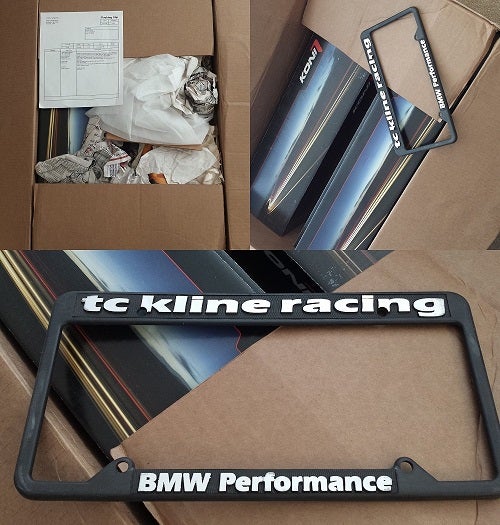
WHAT’S IN THE BOX?!
!!! UNKNOWN CONTENT TYPE !!!
Up front is a 400lb/in spring with a threaded coilover body style strut, built by Koni to TC Kline specs.
!!! UNKNOWN CONTENT TYPE !!!
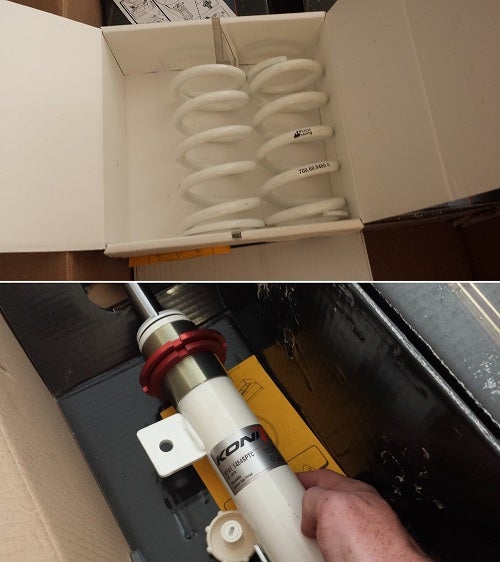
!!! UNKNOWN CONTENT TYPE !!!
At the rear is a 700lb/in spring, again, with rebound adjustable shocks. The rear springs, are indepedent of the rear shock, and in this way, it is not a true “coil-over,” but we’re talking semantics at this point. The rear ride height is adjusted via collars that act as upper spring seats and twist between the body and the spring.
!!! UNKNOWN CONTENT TYPE !!!
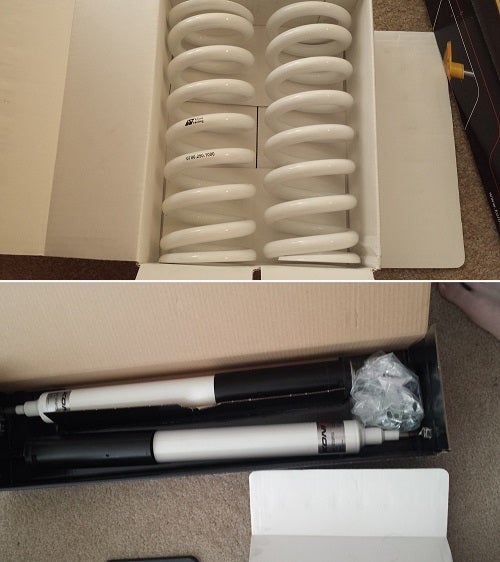
!!! UNKNOWN CONTENT TYPE !!!
With everything neatly tucked in their boxes, I proceeded cautiosly, and wrapped it all open as quickly as possible and yanked everything out.
While I was waiting for the coilovers to arrive, I had shipped out my camber plates to Vorshlag to be reconfigured for the TCK’s. Having gotten those back as well, I mocked up the front suspension.
!!! UNKNOWN CONTENT TYPE !!!
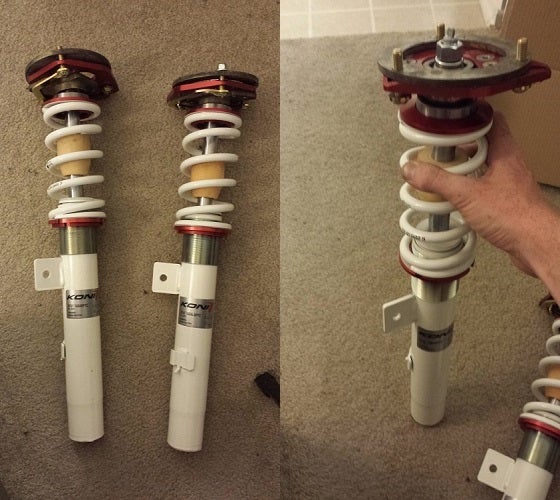
!!! UNKNOWN CONTENT TYPE !!!
Obviously, with this sort of excitement, and readiness to get these bad boys installed, I couldn’t wait to get started.
And about two weeks later, I was getting sick of looking at the big box sitting in the middle of my living room. Well, I guess it’s time to go to AutoZone and pick up those shitty rental spring compressors.
Preface: My old Mazda3 had the same basic suspension setup, of a McPherson strut front end and a multilink rear, so coming into this, I thought it would be as easy as that car, and I would have this install done within a few hours MAX.
Front Suspension
- Jack the car up, and put two stands under there.
- Remove the wheels.
- Unhook the sway bar.
- Remove strut assembly.
Steps 1-3 were no problem. Things got ugly when it came to removing the strut assembly from the knuckle. BMW mounts the E90/E82 front struts into the knuckle with ONE pinch belt. Now, you’re saying to yourself “what’s the big deal? Sounds easier, less stuff to deal with.” At this point, you and I were on the same page. Except that for whatever reason, the knuckle would not yield, and let the strut go. With the bolt completely out of the knuckle, no amount of yanking or twisting would free the strut. I whipped out the pry bar and hammer. Still no go. I jammed a solid metal wedge in the void and tried to hammer the gap open. No go. Some quick Googling set me straight. It was my old enemy: ZE FINE GERMAN ENGINEERING.
!!! UNKNOWN CONTENT TYPE !!!

Recreating the issue. Was too angry to take pictures at the time.
!!! UNKNOWN CONTENT TYPE !!!
There is a proprietary BMW tool used to do this job (because of course there is), and it costs $30, for what is actually just a small socket that fits in the gap. None of the local dealers had it, and buying online means down time waiting for shipping.
With some more furious Googling, I found out that certain VW’s used the same style of pinch bolt and had the same issue. A local Audi/VW tuning shop sold the VW version of the tool for $15. SCORE!
One day and some sweating and swearing later, and we’re here.
!!! UNKNOWN CONTENT TYPE !!!
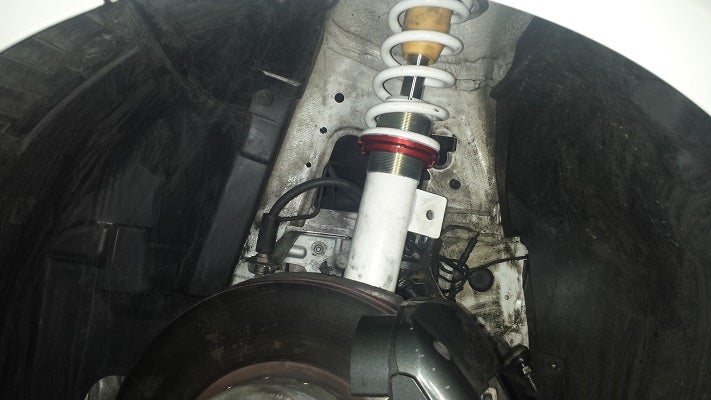
!!! UNKNOWN CONTENT TYPE !!!
Huzzah, I’m not a complete hack!
I did a bit of guesstimation on setting the ride height, by mounting up the wheel, and spinning the spring perch high enough that it would just clear the tire. It took a few more adjustments to get the car in the ball park of where I wanted it. Suspension setup is a fun hobby for me, I’ll be devoting an entire article on the how’s and why’s that guide setting up a BMW for performance driving. In the mean time, it’s time to move on.
Rear Suspension
- Jack the car up.
- Remove the wheels.
- Stare at the magical multilink and consider adding more to your life insurance policy.
Just kidding, multilink is way easier than McStruts. Look ‘Ma, no spring compressors!
!!! UNKNOWN CONTENT TYPE !!!

!!! UNKNOWN CONTENT TYPE !!!
Mounting up the shocks is painless, jack up the LCA a bit to relieve pressure off the bolts, undo the top nut and the bottom shock to LCA fastener and it’s freeeee!
The spring swap requires a bit more patience, as the OEM spring was so long that the LCA had to be completely removed from the knuckle and manhandled a bit. The ride height adjusters act as the upper spring seat, while the bottom of the coil fits in the lower control arm’s “pocket” for the spring. Our only issue with that when we removed the LCA from the knuckle, it pushed back, and was out of alignment, and with the heavy spring rate now in there, it took some SERIOUS cajoling to line everything up and thread the LCA-to-knuckle bolt back in place. The issue was the same on both sides of the car, so I’m assuming that nothing was bent, or damaged that could cause the issue. Interestingly, no one online mentioned any issues with this...
With that done, I dropped the car down, and heard a loud thunk as the tire touched the pavement. A quick drive around the block revealed issues. Something wasn’t right.
!!! UNKNOWN CONTENT TYPE !!!
!!! UNKNOWN CONTENT TYPE !!!
After some back and forth with Kale at TC Kline (
“Hey, we used to autocross together, back when I lived in Ohio!”
), we had it figured out. There were a lot of small individual components that were bundled with the rear shocks. What was not bundled with the suspension was instructions.
!!! UNKNOWN CONTENT TYPE !!!
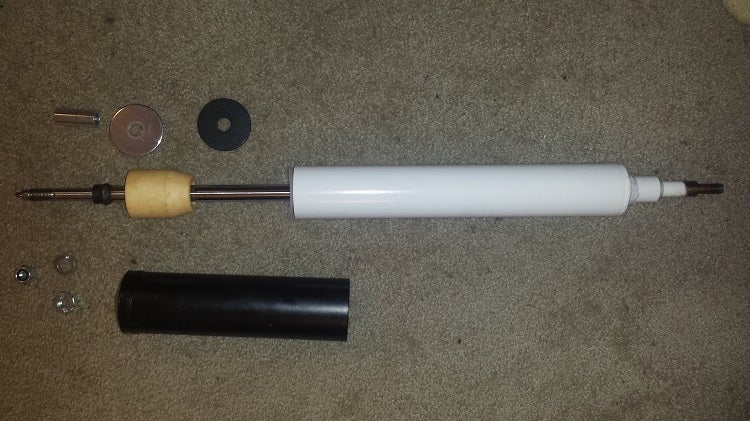
!!! UNKNOWN CONTENT TYPE !!!
I had assembled the top end of the shocks incorrectly. After some futzing around, I lower the car back down and went back out for a test drive. Round 2 did not disappoint. No more clunks, bangs, and sounds of impending doom. Win!
Again, setting the ride height required some trial and error, ultimately setting the rear pretty low. In theory, this should minimize wheel spin and keep the rear end in check. Again, I’ll have to cover suspension setup in a future piece.
!!! UNKNOWN CONTENT TYPE !!!
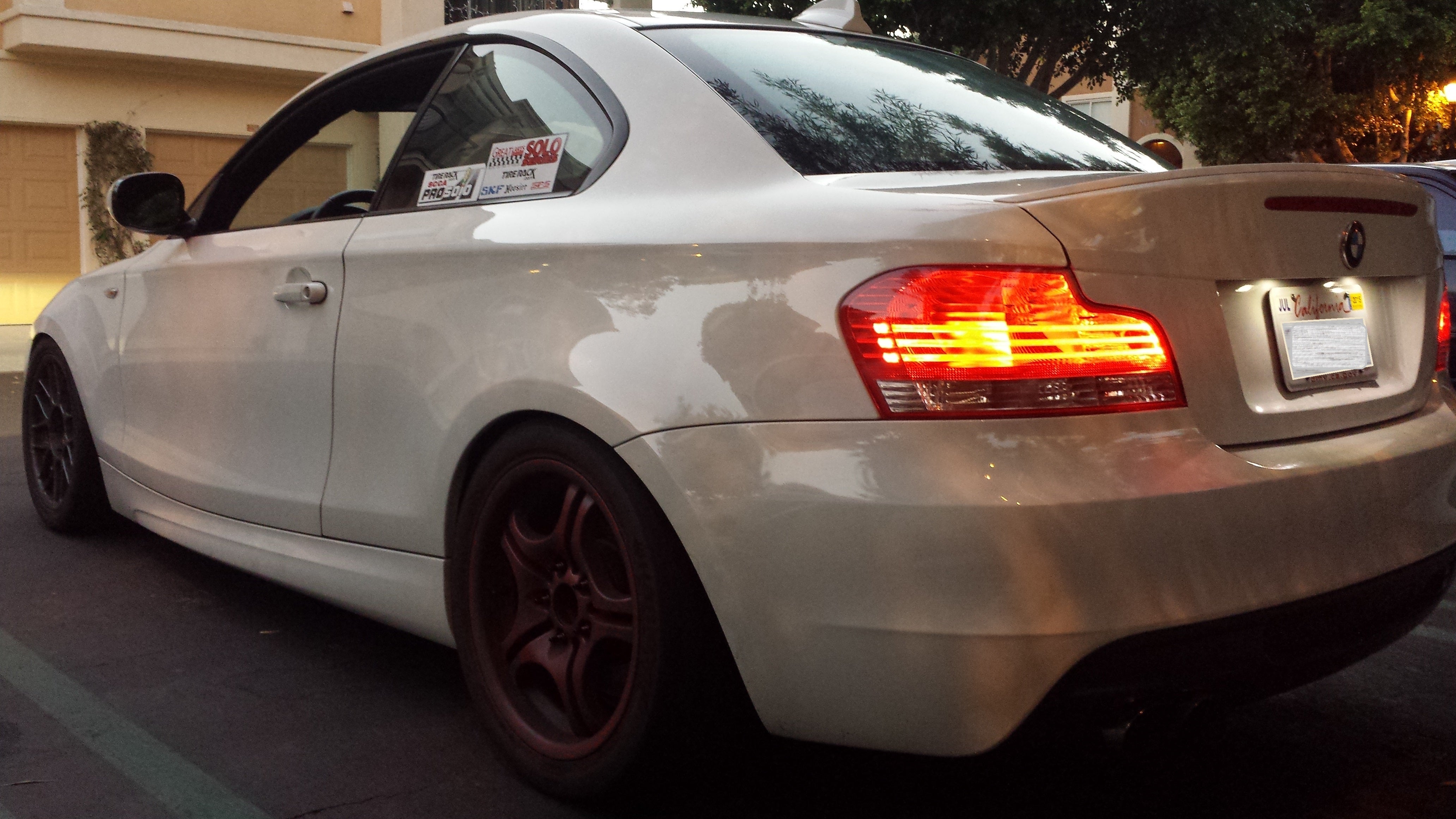
!!! UNKNOWN CONTENT TYPE !!!
The car was later corner balanced by the Maestros at West End Alignment in Gardena, CA. If you’re a racer in Southern California, you know about West End. Yes, it is worth it.
!!! UNKNOWN HEADER TYPE (MULTI-LINE BREAK?) !!!
Factory spring rates: 120 lb/in (F), 350 lb/in (R)
Facory dampers: Bilstein B6 (garbage)
New spring rates: 400 lb/in (F), 700 lb/in (R)
New Dampers: TCK-valved Koni single adjustables
Despite more than
tripling
the front spring rate, and
doubling
the rear rate, ride quality is surprisingly composed. My ride height is more track-focused than street friendly, so being this low while retaining this level of daiy-driveable comfort is impressive. It confirms my thought that the dampers play the largest role in controlling ride quality and body motion. The T.C. Kline dampers are worth their weight in gold.
The factory suspension was woefully under suspended, with substantial dive around braking, and bottoming during acceleration. Of no particular help were the Bilstein B6 shocks, they are terrible, and have no place being used on any vehicle, ever. I’ve ridden in a car with the rear shocks REMOVED that had roughly equal ability to control body motion. They managed to make the ride quality both harsh and numb, and routinely found the bumpstops, even in every day street driving.
The TCK suspension is firm, and composed. The only issue I’ve encountered in street driving has to do with my particularly low ride height in that if I set the rear shocks to too soft of a rebound setting, the rear suspension can bottom out over large/harsh dips and road imperfections. It seldom occurred, but when it did, you were keenly aware of the heavy duty springs out back. Keep the rebound up a touch higher and it’s a none-issue.
Speaking of adjusting the shock rebound, the adjustment knob
actually leads to meaningful changes in shock performance.
That may sound dumb at first, but if you look at the aftermarket suspension market, there is a large amount of hyperbole on “82,000 way adjustable suspension” and the like. Often times, this “feature” is found on cheap suspension setups. Having ridden in cars with suspensions like those (*cough*
BC Racing
*cough*), and tried spending a good amount of time trying to street tune them, I tell you this: you can give those shocks all the clicks in the world, but really, they only have two settings: ‘84 Cadillac DeVille, and rollerskate. It should be said that neither of which is particularly useful for performance driving.
Even a quarter turn (90*) on the rebound, and it feels like an entirely different car. If the car is too loose, sharpen up the rebound. If the car isn’t playful enough, soften the rebound. This comes into it’s own on the track, especially bumpier tracks that require a bit more individual wheel control. A particular example was when I was at Streets of Willow, running the track in the clockwise config. I was having issues with the rear end coming out of right hand corners, so I came back in after the session was over, tightened up the rebound half a turn (180*) on the left rear shock alone, and boom, the next session out, the car was better balanced. That is an invaluable tuning tool in car setup.
!!! UNKNOWN CONTENT TYPE !!!
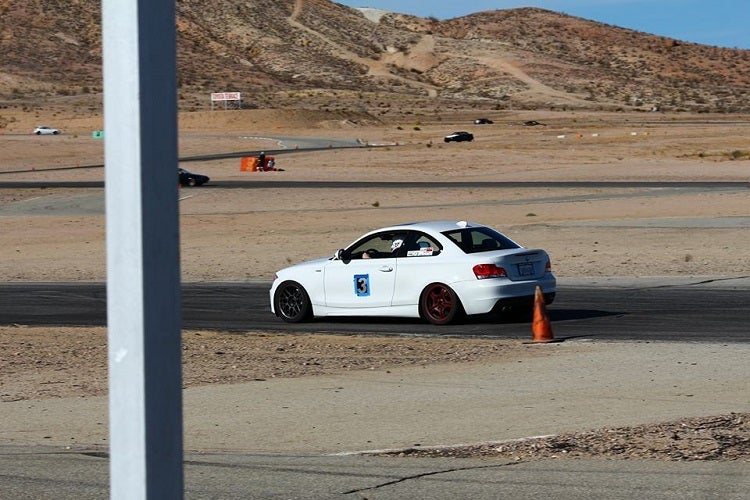
Exiting the right hand sweeper, onto the front straight at Streets of Willow.
!!! UNKNOWN CONTENT TYPE !!!
The spring rates feel just about right for this car, and how I use it. Up front, the higher spring rate minimizes brake dive and keeps the front end sharp and more ready to turn, as weight transfer is minimized. I would guess that if the car was purely a track toy, going up to a 500-550# spring would make the car more fun to drive. Realistically, upping the spring rate far beyond the tire’s capabilities will only reduce ultimate grip, and seeing as I’ve maxed the car out with a 255 section width front tire, it feels pretty good where I’m at.
The rear is tricky. Too low of a spring rate and the car will have trouble putting the power down out of the corner, and be prone to bottoming. Too high, and the car skates over bumps, and becomes harder to drive at the limit. Also, I had been advised that these dampers are pretty much maxed out with a 700# spring. Any higher, and the spring goes beyond the dampers ability to quell body motions, and the ride gets bouncy. With that said, I think an 800# spring would feel really good, if I had enough damper to match. I currently have the OEM rear sway bar, so that biases my opinion. A 700# spring with a bit more rear bar would definitely get the job done in almost every situation. The rear bar will add a lot of additional roll stiffness in low speed situations, aiding rotation, and helping keep the front planted, and at higher speed, when the car is leaning less, the spring would be doing most of the work, and keeping things from being too snappy. Though, some ride height tweaks could help under/oversteer balance a bit.
In summation: Do I recommend the T.C. Kline setup for E82/E90 cars? Hell yes, the dampers alone make it worth your while! Being able to mix and match spring rates is an amazing a la carte convenience. If you’re unsure about how to spec things, just call TCK, they’ll set you straight. The big take away from this, is that I need to write up a more thorough guide to setting up BMW’s and other similar cars for performance driving. The results speak for themselves, the car was 2 seconds a lap faster at Streets of Willow (1:30 lap), and helped contribute to a 6 second lap time reduction at Buttonwillow (2:09 lap). Although stiffer, the car is easier to drive, and more predictable, with breakaway behavior befitting a track day car. Now that I think about it, whenever suspension questions come up, people always ask me how mod XYZ works in relation to their existing setup, and what they should expect (really, I got it twice last week). I’m getting stoked just to lay it all out on the table. Originally, my “impressions” section was about three times as long, but most of it was talking about setup. If you want to know the how’s and why’s of suspension setup, stay tuned for the next round of this verbal diatribe.
!!! UNKNOWN CONTENT TYPE !!!
Jake Stumph is a track day bro and general hack of a writer. He doesn’t get paid to do this yet. He does enjoy the challenge of making an unusual pick for a track day car go fast. If you his banter funny/useful/[insert adjective here], the you can
!!!error: Indecipherable SUB-paragraph formatting!!!
, where he humble brags about mediocre hot laps and BMW ownership.
 04sneaky - Boxers. Blowers. Bikes. And bitches.
> Jake Stumph Racing
04sneaky - Boxers. Blowers. Bikes. And bitches.
> Jake Stumph Racing
09/11/2015 at 10:25 |
|
For those out there that don’t have BMWs, KW will also allow you to pick and choose spring rates and dampner configurations.
 Textured Soy Protein
> Jake Stumph Racing
Textured Soy Protein
> Jake Stumph Racing
09/11/2015 at 10:30 |
|
Come on, you know you want one...
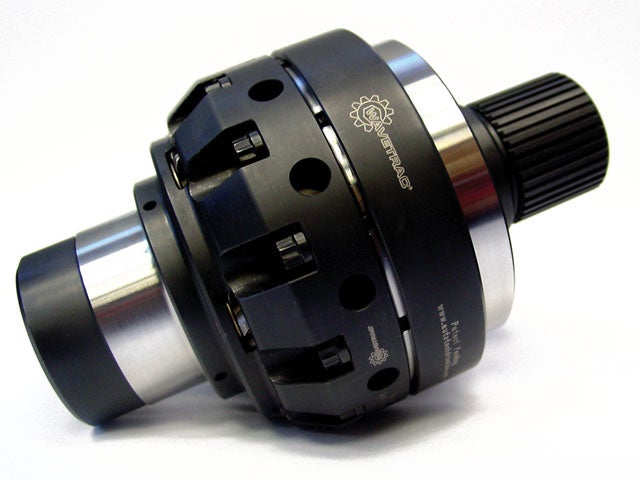
(135is driver here. It’ll light a one-tire fire going up the highway on-ramp near my house if I hit a particular bump with anything resembling a healthy amount of gas pedal. That’s always fun.)
 Jake Stumph Racing
> 04sneaky - Boxers. Blowers. Bikes. And bitches.
Jake Stumph Racing
> 04sneaky - Boxers. Blowers. Bikes. And bitches.
09/11/2015 at 10:38 |
|
Interesting. Every vendor I talked to said that KW wouldn’t match shock valving with alternative spring rate choices unless I paid to have them custom built.
 Jake Stumph Racing
> Textured Soy Protein
Jake Stumph Racing
> Textured Soy Protein
09/11/2015 at 10:39 |
|
Already have one. :)
 PG; the scalpel wielder
> Jake Stumph Racing
PG; the scalpel wielder
> Jake Stumph Racing
09/11/2015 at 16:55 |
|
Will written article again. I am only just beginning. Changed coil packs yesterday to fix some Misfiring and doing the Whiteline Rear subframe inserts next week. I do hate all this bmw propriety bullshit like the spark plug tool, Jack adapters etc. Putting coilovers on my dc5 was the easiest thing ever until I sledgehammered my toe arm off Hahaha. Have you done walnut blasting yet.?
 Jake Stumph Racing
> PG; the scalpel wielder
Jake Stumph Racing
> PG; the scalpel wielder
09/11/2015 at 19:44 |
|
Plugs and coils are easy on this car, I actually have an incoming write up and story about changing them on my car.
I did the Whiteline inserts, if you need reference pics, see here:
http://oppositelock.kinja.com/archives-one-w…
No valve cleaning yet, car is at 40k. Debating between paying a shop to walnut blast the car, and me just disassembling the intake and cleaning the ports and valves with carb cleaner and a shop-vac.
 GNARSTIG
> Textured Soy Protein
GNARSTIG
> Textured Soy Protein
03/14/2016 at 12:57 |
|
First mod in mind for my future 1-er.
 JF-racing
> Jake Stumph Racing
JF-racing
> Jake Stumph Racing
05/29/2016 at 16:53 |
|
hi Jake. I am running 350/700 Swift springs on my E82 with AST4100's. Personally, I think the springs are still too soft. The natural frequency I calculate at these rates is 2.09/1.62. Ideally we would like to get these to 2.2/2.5 but the motion ratio in the rear is so poor we would need a very very stiff spring to make it work. Also, Koni’s are ‘ok’, but they are not very consistent from shock to shock. You should really dyno the shocks. A small adjustment can vary WILDLY between shocks. I’ve seen some of the dyno plots..